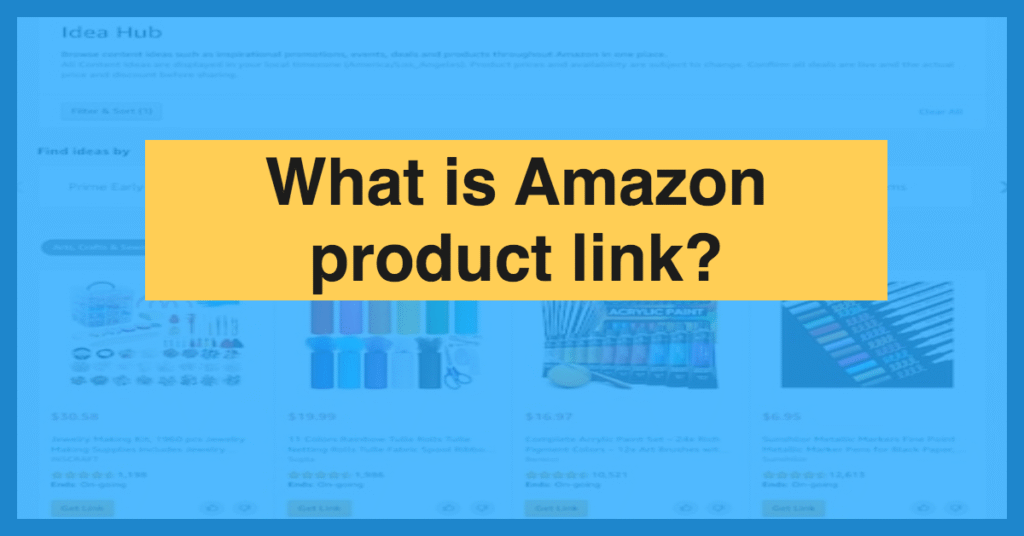
Ever noticed how Amazon product links seem to stretch on forever? They often appear cluttered with a jumble of characters and numbers, making them look intimidating. But don’t worry, there’s a good reason behind this seemingly complex structure. These lengthy URLs are actually packed with information that helps Amazon personalize your shopping experience and run effective advertising campaigns.
This article will delve into the world of Amazon product links, explaining why they are so long and what all those extra characters represent. We’ll explore the various parameters embedded within these URLs, revealing how they track referrals, promotions, user behavior, and ultimately benefit both Amazon and its sellers.
Why Are Amazon Links So Long?
The length of an Amazon link stems from its intricate design. Each URL is meticulously crafted to include a multitude of parameters that serve specific purposes. These parameters act like tiny data points, providing valuable insights into how users interact with products and campaigns on the platform.
Think of it like a secret code that Amazon uses to understand your shopping journey. Every click, every view, and even every abandoned cart contributes to this intricate web of data. This information is then analyzed to optimize advertising, personalize recommendations, and ultimately enhance your overall shopping experience.
Parameters in Amazon URLs
At the heart of these lengthy Amazon links lie numerous parameters – small pieces of text that add specific information to the URL. These parameters can track a wide range of factors, including:
- Product ID: This identifies the specific product being linked.
- Referral Source: This indicates where the user clicked on the link (e.g., an email, social media post, or search engine result).
- Campaign ID: This tracks specific advertising campaigns to measure their effectiveness.
- Tag: This allows Amazon Associates and other affiliates to earn commissions on sales generated through their links.
Decoding the Parameters
Each parameter is represented by a unique combination of letters and numbers followed by an equal sign (=) and its corresponding value. For example, “tag=exampleaffiliate-20” indicates that the link belongs to an affiliate program with the tag “exampleaffiliate-20.”
These parameters work together to create a comprehensive picture of user behavior and campaign performance.
Tracking Referrals and Promotions
One key function of Amazon links is tracking referrals. By analyzing the “referral source” parameter, Amazon can see which marketing channels are driving traffic to their site. This allows them to allocate resources more effectively and focus on the most successful campaigns.
Similarly, the “campaign ID” parameter helps track the performance of specific promotions. Amazon can monitor which deals are resonating with customers and adjust their strategies accordingly.
User Behavior Analytics
Beyond referrals and promotions, Amazon links also provide valuable insights into user behavior. Parameters like “asin” (product identifier) and “node” (category) reveal what products users are viewing and how they navigate the site.
This data helps Amazon personalize recommendations, improve search results, and create a more tailored shopping experience for each individual customer.
Benefits for Amazon Sellers
The intricate structure of Amazon links offers numerous benefits for sellers as well:
- Performance Tracking: Sellers can use parameters to track the effectiveness of their own marketing campaigns and identify which channels are driving sales.
- Affiliate Marketing: The “tag” parameter allows sellers to leverage affiliate programs and earn commissions on sales generated through external websites and influencers.
- Product Optimization: By analyzing user behavior data, sellers can gain insights into customer preferences and optimize their product listings for better visibility and conversion rates.
Conclusion
While the seemingly endless length of Amazon links might initially appear daunting, they actually represent a sophisticated system designed to enhance both the shopping experience and business operations on the platform. These intricate URLs track referrals, promotions, user behavior, and provide valuable data that drives personalization, campaign optimization, and ultimately, success for both Amazon and its sellers.
